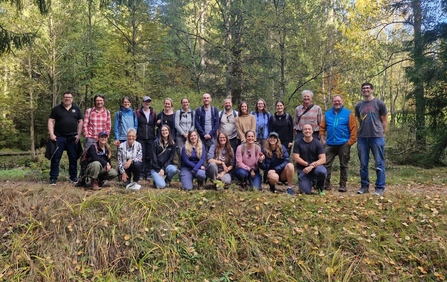Last autumn, the annual Lifescape Project retreat took place in the Bavarian Forest National Park in Germany. These gatherings are an opportunity for staff and trustees to spend time together, visit inspiring wild landscapes and learn from projects that share some of the organisation’s goals.
The Bavarian Forest is home to a host of iconic species, all contributing to making this area a rich and special landscape. Many of these species are now threatened or already lost from the UK, including the capercaillie, the European elk, and of course the Eurasian lynx. The Lifescape Project is leading The Missing Lynx Project, with many team members working on different aspects, so it was a thrill to walk in the same forest as these elusive cats.
Lynx were lost from the Bavarian Forest through human persecution in the 19th century. A reintroduction attempt took place in the 1970s, though it was not very successful. However, lynx eventually returned to the area through natural recolonisation following a reintroduction across the border in the Czech Republic. There are now 19 known individuals in the National Park.





